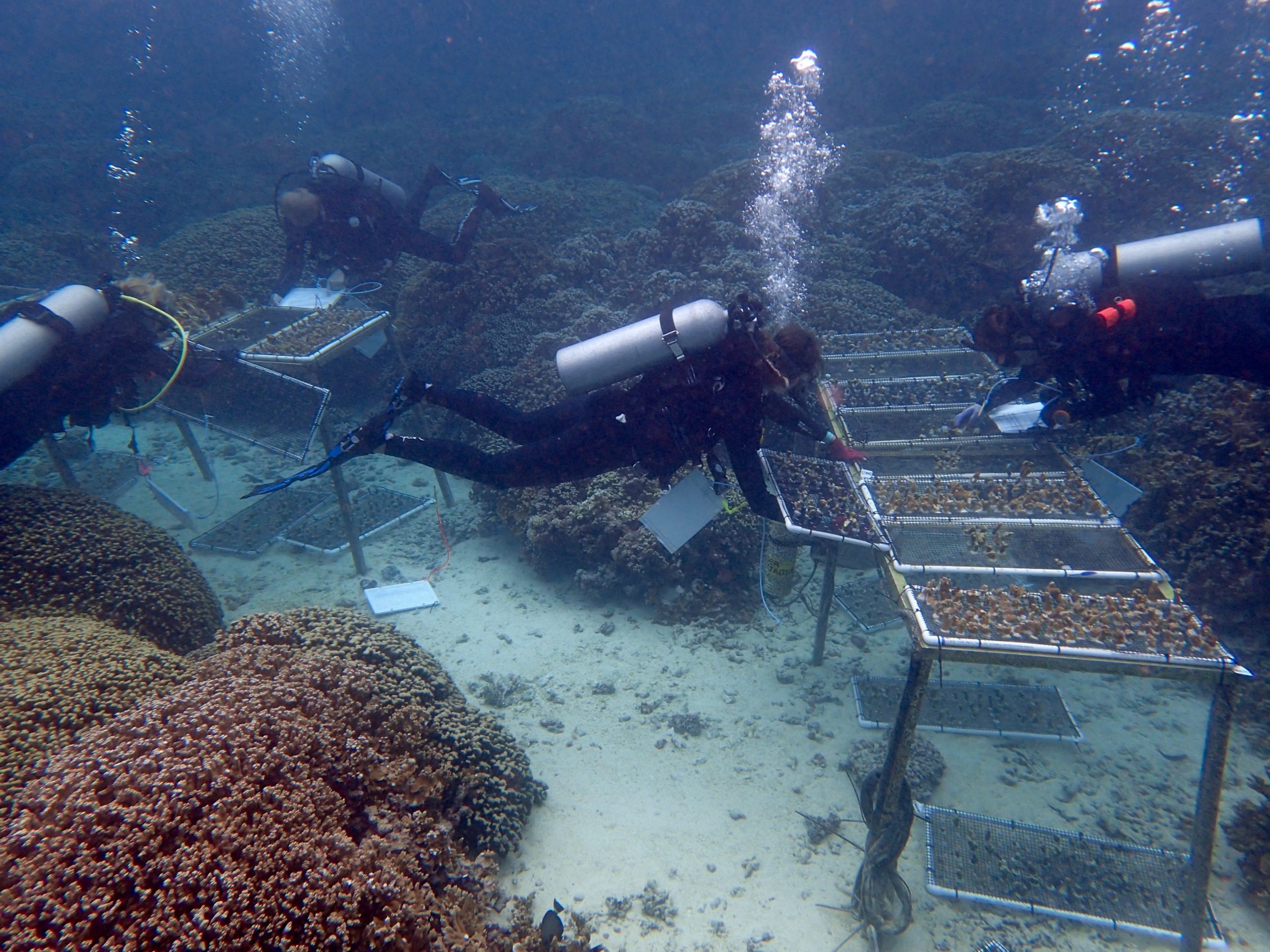Overview
Rising temperatures threaten coral reefs, which dissipate wave and storm energy to protect nearby shorelines for nearly 200 million people worldwide. To enhance coastal protection, this novel project will identify thermally tolerant coral stocks, propagate in nurseries and outplant at three sites on O’ahu, Hawai’i. Federal, state, academic and non-profit partners will test the efficacy of this strategy and evaluate best practices that will be transferable to increase efforts across the state.
Quick Facts
Geographic Region:
Pacific Ocean
Country or Territory:
United States of America
Biome:
Coastal/Marine
Ecosystem:
Coral Reef, Seagrass & Shellfish Beds
Area being restored:
5-10 acres
Project Lead:
Gates Coral Lab - Hawaii Institute of Marine Biology
Organization Type:
University / Academic Institution
Project Partners:
NOAA's Restoration Center, Hawaii State Department of Land and Natural Resources (DLNR), and Malama Maunalua (non-profit organization)
Project Stage:
Implementation
Start Date:
2019-06
End Date:
2022-05
Primary Causes of Degradation
Climate Change, Urbanization, Transportation & IndustryDegradation Description
In addition to local threats to Hawai’i’s coral reefs, increasing sea surface temperatures that cause coral bleaching and ocean acidification that weakens coral skeletal structures and calcification, pose new and significant stresses to these vital ecosystems. Over the past 30 years we have lost 50% of corals worldwide. It is predicted that only 10% of corals will survive past 2050 as sea surface temperatures continue to increase. Climate change, driven by human activity, is now the biggest threat to corals and the main cause of large-scale bleaching events. This is particularly concerning in Hawai’i, where coral reefs generate more than $360 million each year with tourism as the main driver of Hawai’i’s economy (DLNR 1999). In Hawai’i we had back-to-back widespread bleaching events in 2014 and 2015, plus another event in 2019. While many of these corals recovered, warming events are anticipated to be more frequent and last longer in the near future. It is not enough to restore coral cover if the stocks used will succumb to this stress.
Defining the Reference Ecosystem
The reference ecosystem is based on diverse sources of information (e.g. multiple extant reference sites, field indicators, historical records, predictive data).Project Goals
Surrounded by the Pacific Ocean and over 2,000 miles from the nearest land mass, the entire state of Hawai’i is classified as being within the coastal zone, and therefore constantly under threat from the impacts of storms, floods and sea level rise. Storm surge inundation of coastal areas can have serious consequences since much of Hawai’i’s expansive industrial infrastructure and human population, over 1.4 million people, are clustered along the coastlines. The island of O’ahu, where this project is based, is the most populated housing two-thirds of all residents. Resilient coral stocks would restore biological function, support a full diversity of services, and will increase in size over time by natural accretion. Out-planted corals will provide a service immediately, and continue to grow as sea level rise becomes more imminent. In addition to reducing storm surge energy, coral reefs are reservoirs of biodiversity that play central roles in tourism, fisheries and recreational industries. An intact Hawaiian coral reefscape supports thousands of fish and invertebrate
species as well as sea turtles and the corals themselves.
Monitoring
Monitoring Details:
We will monitor abiotic conditions at each site alongside a subset of individually tagged corals and transects. Monitoring of individual corals is critical for the validation of the selection techniques we propose and will allow us to measure differences between random and tailored coral communities in the restoration framework, comparing outcomes to our hypothesized results. Transect surveys will complement the monitoring of individual corals and provide a community level measurement of each treatment. At each site we will follow previously established best practices and record colony survivorship, size, disease, bleaching condition, fragmentation and signs of predation. We will also collect data on fish recruitment, temperature, light and sedimentation to quantify environmental conditions relating to the out-planting. The quarterly monitoring schedule will capture seasonal variation and successional processes that occur after the introduction of new coral colonies as well as the thermal maximum during late summer, which provides further context for outcomes of restoration executed with prior knowledge on stress tolerance. In the event of a natural bleaching event, we will opportunistically monitor out-planted corals over time to document damage and recovery as it relates to thermally tolerant and unknown coral phenotypes.
Ecological Outcomes Achieved
Socio-Economic & Community Outcomes Achieved
Sources and Amounts of Funding
Funding from the National Fish and Wildlife Foundation.
Other Resources
RestoreWithResilience.Org
Related Research
Ongoing research.Primary Contact
Name:
Kira Hughes
Affiliation:
Hawaii Institute of Marine Biology
City:
Kaneohe
State:
HI


